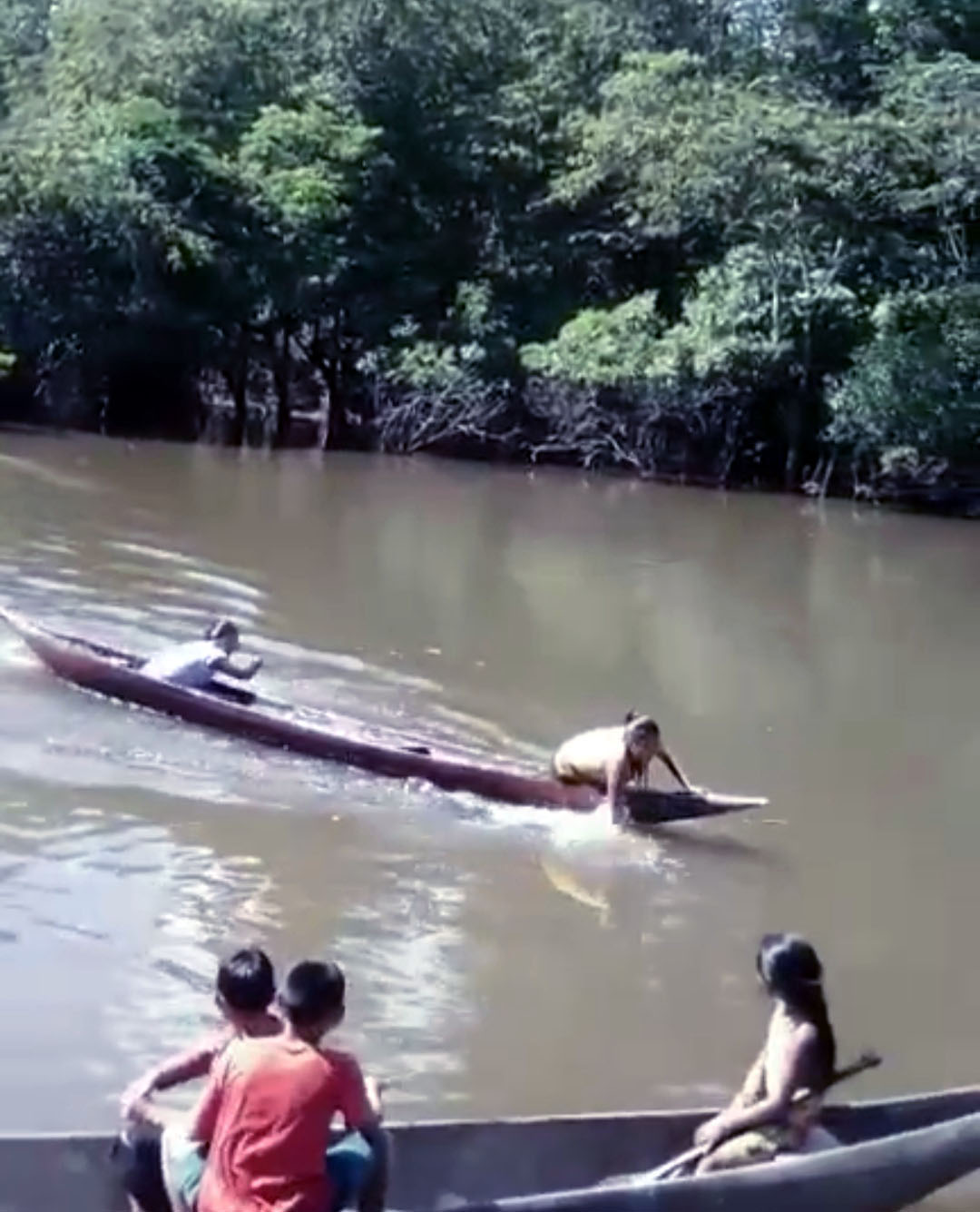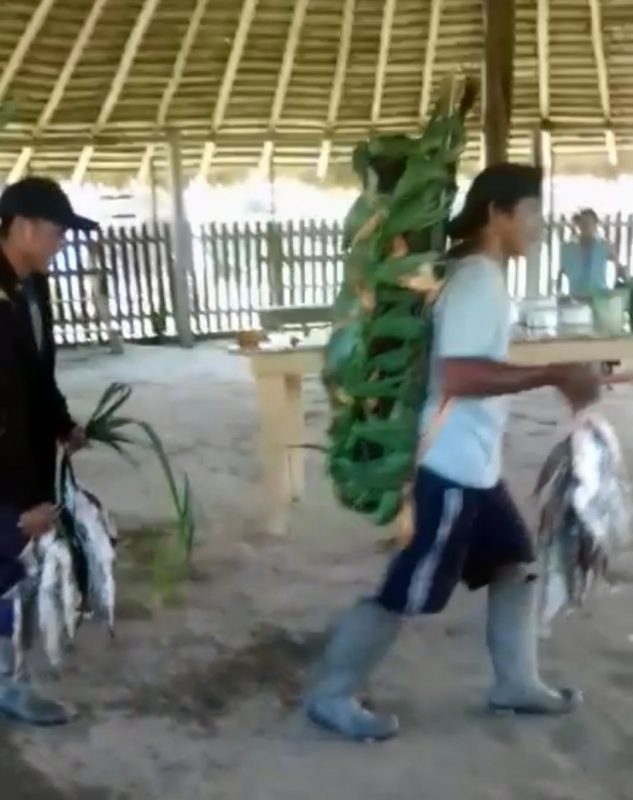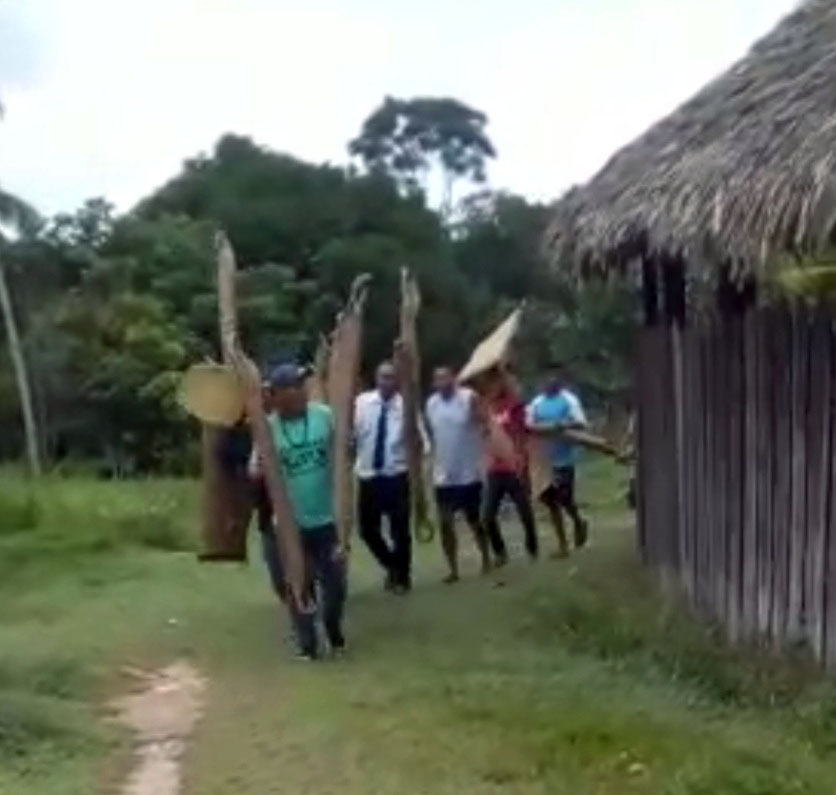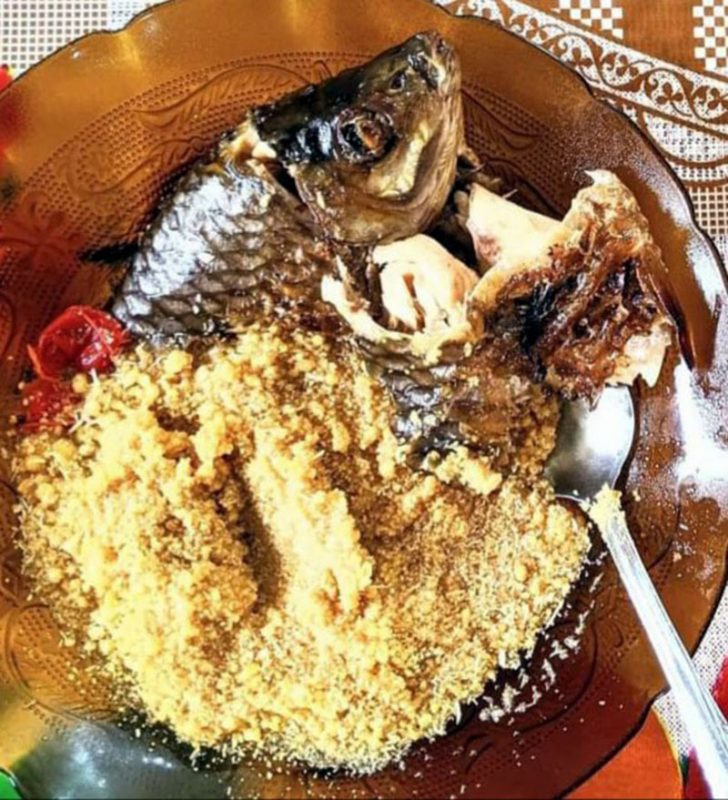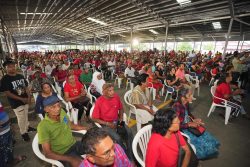Three weeks of communal activities steeped in both traditional and modern practices, including hunting, fishing, dancing and singing, herald Christmas festivities each year in the Indigenous community of Parabara.
The activities, which begin on 1st December with planning for the Christmas holidays, typically end when all the foods and drinks are finished on Boxing Day.
According to Parabara’s Toshao, Clarence Rudolph, the Christmas festivities make up the biggest activity in the village and can be compared only with the month of activities that take place in September to mark Indigenous/Amerindian Heritage Month. “It brings us together… Christmas and heritage celebrations are the biggest in the sense that the celebrations are longer and they involve the entire community. We do not leave out anyone. This year might be a little different as we are not inviting outsiders,” Rudolph said.
During the first week in December, the celebrations are characterised by communal activities in the making of household utility craft, hunting and fishing, and preparation of beverages and staples for the events that follow.
Parabara, found in the rainforests of South Rupununi in Region Nine (Upper Essequibo/Upper Takutu), is close to the Kuyuwini (pronounced Ku-ju-wee-nee) River, which empties into the Essequibo River. It is about 35 miles from Karaudarnau Village.
In a telephone interview with Stabroek Weekend from Lethem, Rudolph described the community as close-knit, with a population of 215 people including 94 children. “The houses are close to one another. I would have many neighbours around me. We share yard space. We have no fences. It is one big compound. Our primary school, which has 64 children enrolled and which houses a nursery class, is in the middle of the village along with the Christian Brethren and Catholic Church. Surrounding the houses are the cassava farms, with the forest behind the farm surrounding the village,” he said.
The majority of the people are Wapichan and Wai Wais. There are also two Makushi families. According to Rudolph, the village is not a satellite community to any other village and at present the people “hoping that we will be receiving title to our lands very soon according to this current government.”
In the previous years, they invited guests from other communities, like Aishalton and Karaudarnau, for the village’s Christmas festivities. However, this year the celebrations will be scaled down, Rudolph said, because of the COVID-19 pandemic. “It hit our community and we had 36 recorded cases. We thank God we were able to get over it and we had no deaths,” he noted.
Planning
The Christmas activities begin on the 1st December with a community get together to start planning for the rest of the month. Rudolph noted that everyone knows his or her role but specific tasks are assigned based on skills and volunteers to certain people or groups of people.
“During the first week in December we normally plait our warishis, sifters, matapees, fans and other utility craft needed for the Christmas and New Year’s. Both men and women work together. Even the boys and girls try their hands in making some of the items and in this way they learn the art. Later on they too will become skilled craftsmen and craftswomen. We do not separate the work for men and women. They go out together in the forests and swamps to gather fruits like turu and ite, which we use to make beverages,” Rudolph explained. Turu and ite are palm trees found in Guyana’s hinterland.
This year, on the 11th December, another community meeting was held in the umana (benab) found in the centre of the community to select the hunters and fishermen. Both men and women were selected. On the same day the village also selected the cooks and those who will make drinks for the occasion. The cooks and the drinks makers were selected by families. (It is always a guessing game, too, with who is selected to act as Santa Claus and give gifts to the children on Christmas Day. His identity is only known to a few.)
On Sunday, 12th December, the hunters and fishermen left Parabara in boats and went downriver to find meat for the festivities. Sent off with good wishes from the villagers, they would be away from home for almost two weeks, salting, drying and smoking the meat and fish they caught to take back to the village.
“They will go as far as 60 miles from the village. That is where they will be camping. They would travel through the Kuyuwini River downstream towards the Essequibo River,” Rudolph said.
When the hunters leave the village, the women are presented with the utility crafts by the men and boys of the village in a simple ceremony where everyone sing and dance to traditional music.
The hunters and fishermen were due to return home on the morning of the 23rd December. While most of the catch will be smoked, salted and dried, Rudolph said, “On the morning of the 23rd December the hunters and fishers will catch some fresh fish or wild meat so they can bring some fresh catch to the village on their return. They will be dressed in costumes like they do in the heritage celebrations. They will dress differently so that their families will not recognize them. They will be using a fruit to paint themselves. So most of the male hunters will be painted in black to disguise themselves from their families. Everybody will be guessing who is who.”
Most of the wild meat are usually labba, powis, tapir (bush cow), alligator, deer, and maybe an agouti (accouri), and the fish caught are usually haimara, tiger fish, piranha and other small fish.
The first communal lunch will be on the 23rd December when everyone will be treated to fresh meat or fresh fish.
The hunters and fishermen are given a grand welcome on arrival with clapping, music, songs and dances as they display their catch for the villagers to see.
“When we do big hunting and fishing, we go very far because we don’t want to reduce the fish and wild meat population close to the village which people depend on almost every day of their lives. Every year we go to different places. Some years we go further down the river. It depends on how the village council sees it. It also depends on the advice of the elders who may advise against going to a certain location one year and returning there another year.”
Both men and women are involved in the cooking, with all the cooks trying to outdo each other.
Rudolph said, “Our staple is farine made from the cassava root but we also bake cassava bread during the celebrations for the tuma pots. The majority of the food prepared are tuma pots and roasted meat. We do a lot of roasting. We have different types of tuma pots, maybe, three or four different types. We have a very hot pot and we have without pepper because we have to cater for the children.”
He continued, “All our drinks will be fresh or sweet. Maybe just two or three families will prepare strong kari. (Kari is an alcoholic beverage made from the cassava.) The majority of us would use fresh drinks from turu, ite, banana and pineapple. They will be used until the celebrations finish. No one buys anything.”
On the 24th December there will be another communal breakfast after which a number of Indigenous and other competitive games and traditional dances begin. Lunch and dinner are also communal on the 24th.
After dinner there is a break in the festivities and people go to worship at their respective churches on Christmas Eve.
On Christmas Day early morning devotions are held and after that everyone gets involved in a number of outdoor games either as competitors or spectators.
Games
While some of the people may play outdoor games, like football and cricket, Rudolph said, “Most of the games will be indigenous games and dances and competitions, which we normally see during heritage celebrations. “We do not celebrate like outsiders. We play raw indigenous games, like archery using bows and arrows made by our marksmen, kari drinking competitions, wrestling, such as the armadillo and ant eater wrestles. We have so much that we play, including some river games.
The Christmas celebrations end on Boxing Day and villagers once again congregate to start planning for the New Year’s.
“We will make fresh drink. Within a space of two days we will want to catch as many fresh fish and hunt for fresh meat. This time we will not go as far from the village as we did for the Christmas.”
The village observes Old Year’s Day by dressing in old clothes. They will spend the day together and in the evening there would be a communal roasting of meat.
“We will all have dinner together in what we call our ‘community roasting time’. We will come together at umana as families and the families will roast whatever is fresh. Immediately after roasting time people will go to the midnight church service. After midnight if we have any supplies of flares/fireworks we would shoot them into the night sky. We also set up a bonfire and after midnight people would gather around the bonfire and extend New Year greetings to one another while listening and dancing to traditional or Brazilian forro music. After that we go back to umana where we spend the time together, sometimes until breakfast time. People with small children go home.”
Asked what music is played, Rudolph said, “We have our indigenous music that we play. We call it the turtle music. We use a turtle shell to make musical notes. People dance to the rhythm. There are other songs that we compose, some are Wai Wai and others in Wapichan. Some of the music is joined with the Brazilian forro music.”
For lunch, Rudolph said, most of the women who will cook that day will want to surprise the villagers with what they prepare. “We have a good lunch together. Some of them will prepare curry and cook-up. It all depends on who are cooking.”
Residents play outdoor games, like football and cricket. If any food and drinks are left over, the celebrations will go into January 2.
Immediately after the New Year celebrations, the community meets in umana to plan for the year.
Rudolph said that for the first time this year, the community will be sharing some of the photos of this year’s celebrations. “We have never shared pictures with the public of our celebrations,” he noted.
